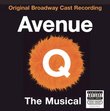| All Artists: Paul Hindemith, Werner Andreas Albert, Queensland Symphony Orchestra, David Geringas Title: Hindemith: Complete Cello Concertos Members Wishing: 1 Total Copies: 0 Label: Cpo Records Release Date: 6/10/1997 Genre: Classical Styles: Forms & Genres, Concertos, Instruments, Strings Number of Discs: 1 SwapaCD Credits: 1 UPC: 761203937523 |
Search - Paul Hindemith, Werner Andreas Albert, Queensland Symphony Orchestra :: Hindemith: Complete Cello Concertos
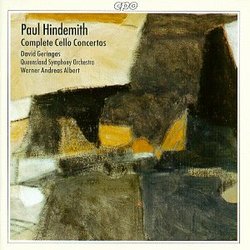 | Paul Hindemith, Werner Andreas Albert, Queensland Symphony Orchestra Hindemith: Complete Cello Concertos Genre: Classical
The Concerto in E-flat is an early work in a derivative, late Romantic style--though it's very well written all the same. Kammermusik No. 3, by contrast, is one of Hindemith's linear, spiky, neo-Baroque answers to Bach's... more » |
Larger Image |
CD DetailsSynopsis
Amazon.com The Concerto in E-flat is an early work in a derivative, late Romantic style--though it's very well written all the same. Kammermusik No. 3, by contrast, is one of Hindemith's linear, spiky, neo-Baroque answers to Bach's Brandenburg Concertos. The later Cello Concerto, which dates from the 1940s, stands among the composer's finest works for solo and orchestra. The second movement not only begins with one of his all-time best tunes, it became the source of William Walton's extraordinary Variations on a Theme by Hindemith. It makes great sense to have all of Hindemith's music for cello and orchestra together on a single disc. If you love the cello, then baby, your ship has come in. --David Hurwitz Similarly Requested CDs
|
CD ReviewsHindemith Complete Cello Concertos 12/14/2000 (5 out of 5 stars) "This recording of Hindemith's complete concertos for cello and orchestra neatly collects three important and diverse works in one unique package. In fact, this is the only available recording of his Concerto in E flat, Op. 3. This early work is extremely difficult, and David Geringas, a phenominal Rostropovich protege, executes this Straussian/Wagnerian composition marvelously. The recording of the other two concertos are equally exciting, with driven tempi and interperatation. The full bodied accompaniment for these works is supplied in equally charged performances by the Queensland Symphony Orchestra." Kammermusik (1925) is my favorite. Tom Brody | Berkeley, CA | 03/28/2010 (5 out of 5 stars) "This compilation contains a generous and beautiful selection of three cello pieces composed by Paul Hindemith, with the cello played by Mr. David Geringas. The sound quality is excellent. It was recorded in August 1995 in Brisbane, Australia, with a digital tape recorder.
CONCERTO (1916). This piece begins with a horn playing a little solo, accompanied by strings. At 1 minute, 30 seconds, the cello makes its entrance, while the other instruments quiet down and provide tasteful embellishments. At 4 minutes, the cello provides a trill, which seems to signal a turning point of the piece, in particular because the other instruments play an ominous-sounding tune. But it is not a turning point, because the piece continues to tread along its earlier happy and optimistic path. At 6 min, 15 sec, are tiny solos by oboe, then clarinet, then French horn. The cello resumes at 6 min, 50 sec. At 8 min, 20 sec, the cello provides another trill, and this is again followed by the ominous tune from the orchestra. But at 8 min, 50 sec, the piece resumes its happy and optimistic outlook. At 9 min, 40 sec, there is a brief flute solo, then there is a turning point where the cello skitters about quickly, followed by a BOMBASTIC sequence, resembling the end of a typical Mahler symphony. Movement 2 begins with a sad or plaintiff quality. At 1 min, 40 sec, the sad music ends and is replaced by a happy episode. At 5 min 20 sec, comes an episode that any layperson would characterize as being "lovely." The cello repeatedly plays a HUMMABLE TUNE of a dozen notes that anybody could hum or whistle. At 8 min, 15 sec, all is quiet except for some ominous drumming, then at 8 min, 40 sec, the cello and other instruments begin a galloping episode. The same HUMMABLE TUNE is provided at various intervals, for example, by the flutes or trumpets. This piece contains plenty of variety and is abundantly listenable and contains no "dangerous" qualities. KAMMERMUSIC (1925). Kammermusic (1925) begins with an unaccompanied cello solo, lasting 25 seconds. The strings join in. An episode with flutes and oboe begins at 50 seconds into the piece. Brass joins in at 1 min, 10 sec. The music is intriguing and unique, but it is pleasant enough for a child to like. The second movement begins with a HUMMABLE TUNE. The cello skitters about quickly, minding its own business, while the winds command the listener's attention. At 2 min, 15 sec, an oboe plus flutes plays the HUMMABLE TUNE. At 2 min, 40 sec, the cello plays the HUMMABLE TUNE. The second movement resembles MATHIS DER MALER. I like the second movement the best. The third movement begins with a low-throated slow moving brassy episode. At 2 min, 40 sec, the winds provide little PERCUSSIVE CHIRPS, while the cello drones on and on, in a low-throated elegy. At 5 min, 0 sec, the elegy ends and is replaced by a brassy episode (with skittering cello) that develops into a crescendo. The fourth movement provides a happy fugue, with a tune somewhat reminiscent of Disney's song, "Heigh-ho, heigh-ho, its off to work we go." The fugue is handed off to clarinets, then violins, then flutes, then bass cellos, while all along the solo cello skitters along minding its own business. CELLO CONCERTO (1940). Cello Concerto (1940) begins with a scary-sounding clearing of the orchestral throat. At 20 seconds, a cello solo begins, accompanied by strings, then flutes, then brass, then woodwinds. The tempo forward-thrusting but calm. At 2 min, 20 sec, there is a transition, where things get loud, ending in a crashing climax at 3 min, 0 sec. At 3 min, 0 sec, begins an unaccompanied cello solo, lasting exactly 2 minutes. Then the winds join in, while the cello provides trills that are repeated in an upward moving motif. AT 6 min, 10 sec, is a BOMBASTIC episode. The second movement is sweet-sounding, where the string accompaniment is plucked. A theme is repeated over and over. The theme consists of THREE ASCENDING NOTES followed by a rapid sequence of notes sounding like a SEWING MACHINE. The theme of the 3-notes followed by the sewing machine is repeated over and over. The third movement is, at times, like a march, as the beat is regular and there are happy trills on the flute. In fact, the third movement is called, "Marsch." At 5 min, 0 sec, a loud thrashing episode appears, but after ten seconds, things quiet down. At 6 min, 30 sec, comes a short bombastic episode (bombasticity in bite-sized quantities is sometimes typical of Hindemith's compositions). At any rate, if you like Hindemith's SYMPHONIC METAMORPHOSIS OF THEMES BY CARL MARIA VON WEBER, then you are likely to find some similarity in the third movement. " |

 Track Listings (9) - Disc #1
Track Listings (9) - Disc #1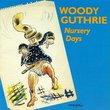
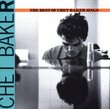
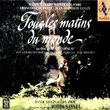
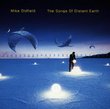

![Seussical [2000 Original Broadway Cast]](https://nationalbookswap.com/cd//m/02/4802/514802.jpg)


